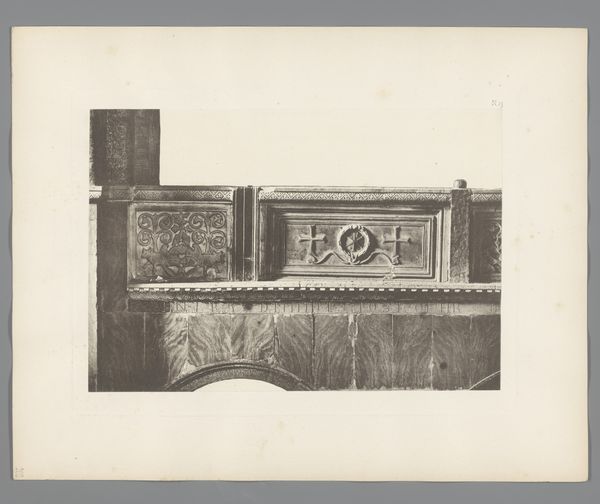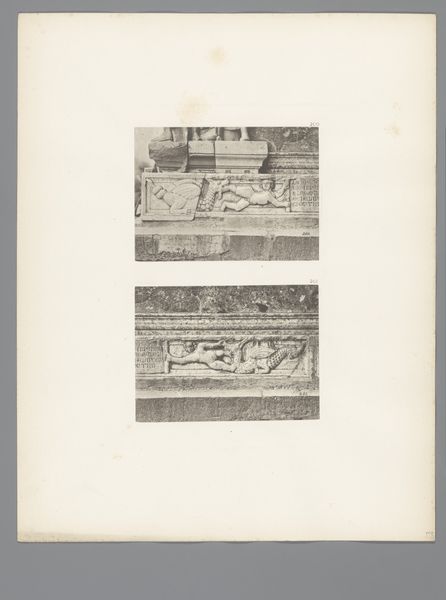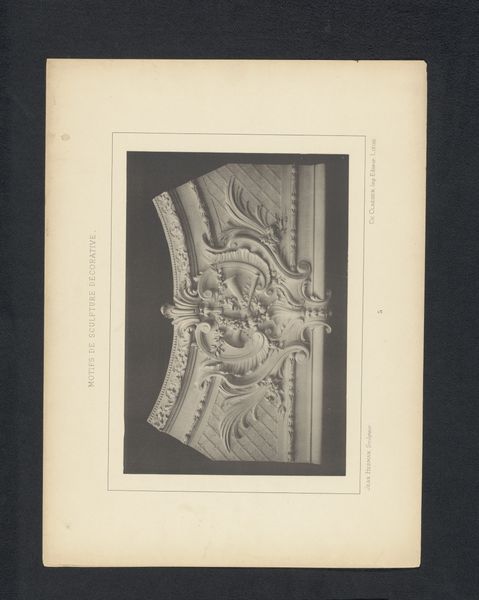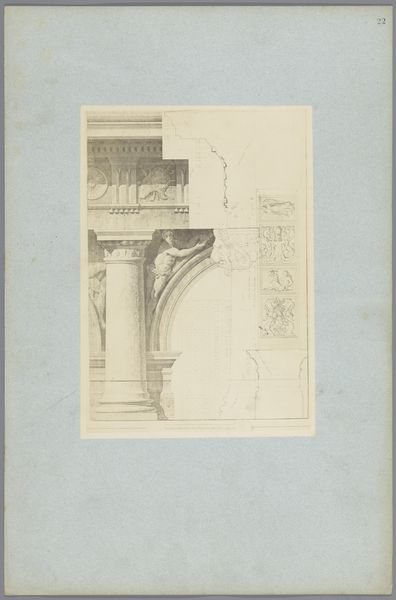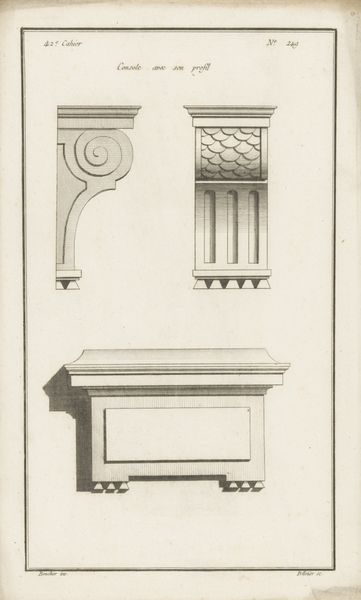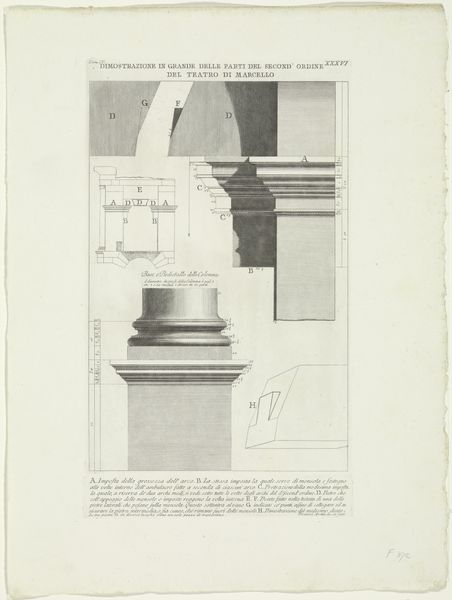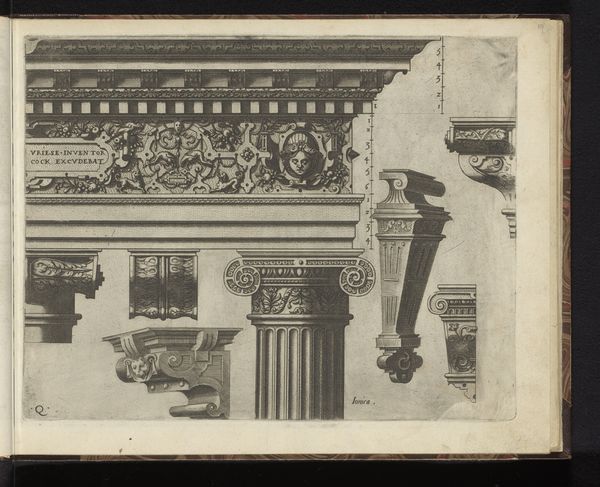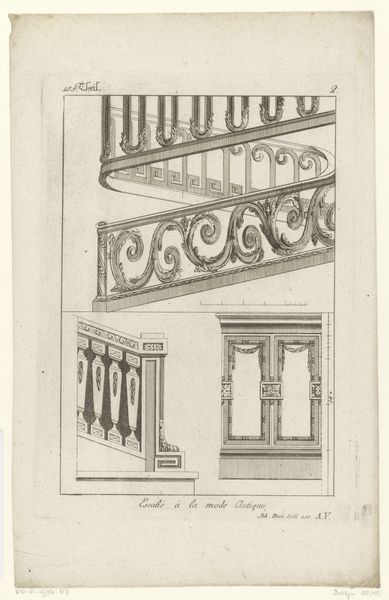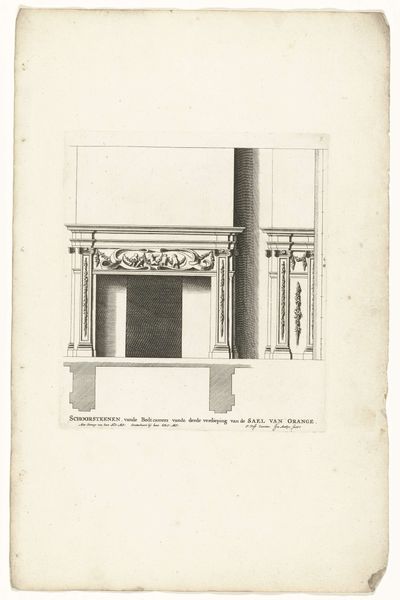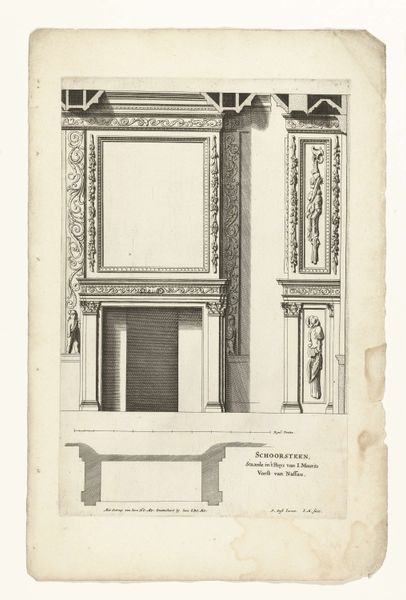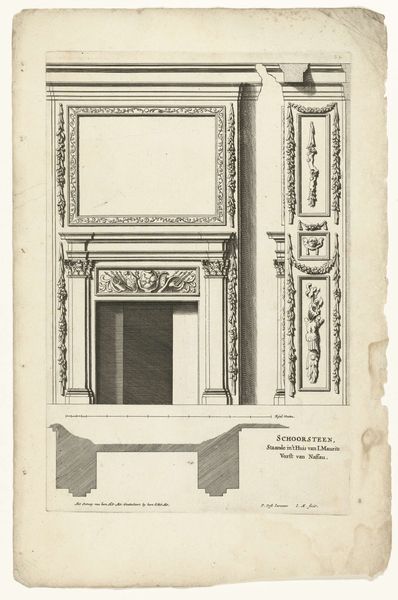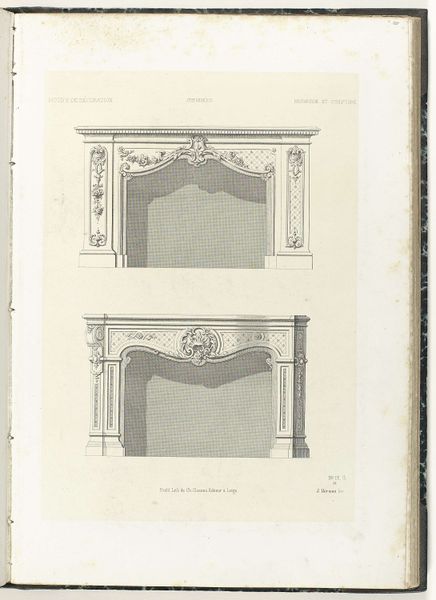
drawing, print, paper, ink, engraving, architecture
#
drawing
# print
#
paper
#
form
#
ink
#
geometric
#
classicism
#
ancient-mediterranean
#
line
#
history-painting
#
academic-art
#
engraving
#
architecture
Dimensions: height 474 mm, width 337 mm
Copyright: Rijks Museum: Open Domain
Curator: I'm struck by the crisp detail in this print, an engraving in ink on paper dating from 1822 to 1825, by Paulus Lauters. It’s entitled “Details van de architectuur van een tempel,” or “Details of the Architecture of a Temple," here at the Rijksmuseum. Editor: Immediately, the clarity of the lines draws my eye. The geometrical precision, combined with those intricate motifs…it gives a sense of almost detached reverence. There’s a beauty in this methodical representation. Curator: It absolutely speaks to the 19th-century fascination with antiquity, particularly with cataloging and disseminating knowledge of classical forms. We see the vestiges of the Temple of Minerva Polias at Priene carefully rendered here. Editor: Look how each architectural fragment is isolated, presented as a distinct study. There's a deliberate focus on form—the volutes of the Ionic capitals, the acanthus leaves—emphasizing line and shape. The rendering is almost diagrammatic. Curator: Indeed. This piece highlights the increasing awareness among artistic and intellectual circles in the Netherlands during that era, illustrating a visual culture that privileged classical ideals. Lauters and others aimed to instill the public with an appreciation for the aesthetics and the grand narratives embedded in ancient architecture. Editor: Yes, and I’d suggest that by distilling architecture into isolated elements, he’s inviting us to contemplate the abstract beauty and structure inherent in form, somewhat removed from its historical or functional purpose. Curator: Perhaps it served to democratize classical art and architecture for public consumption through prints. After all, not everyone had access to original sites or artifacts. Editor: Whether through that democratization or decontextualization, it succeeds as an intriguing interplay between precision and artistic interpretation. It emphasizes design. Curator: An engaging synthesis of the academic drive for documentation and aesthetic engagement—it leaves us considering the enduring impact of classicism. Editor: And its lines provide lasting lessons about the foundational appeal of classical design.
Comments
No comments
Be the first to comment and join the conversation on the ultimate creative platform.


